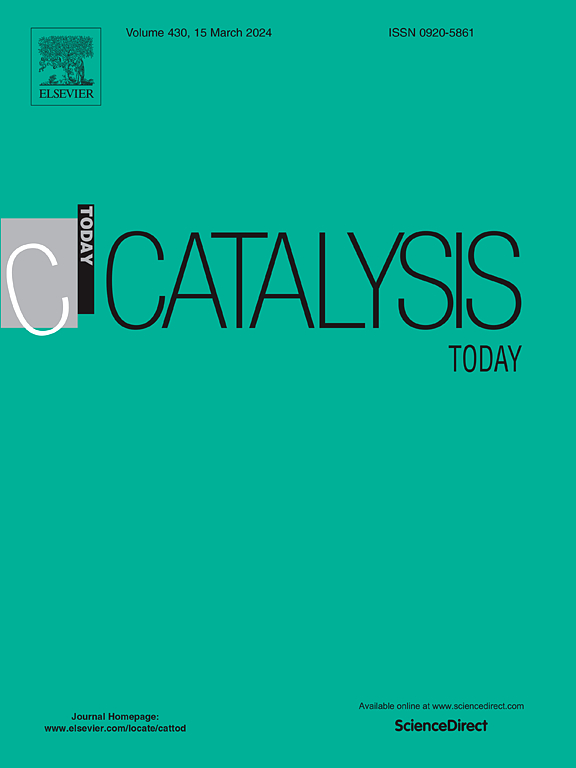Supercritical CO2 as sustainable solvent for selective photo-oxidation of monoterpenes with dioxo-Mo complex/TiO2-nanotubes
IF 5.2
2区 化学
Q1 CHEMISTRY, APPLIED
引用次数: 0
Abstract
The selective oxidation of monoterpenes to the corresponding epoxides by the photo-stimulated Oxygen Atom Transfer (OAT) reaction was achieved in the supercritical CO2 medium (sc-CO2) under the action of molecular oxygen and the catalytic action of the dioxo-molybdenum complex anchored on TiO2 nanotubes, MoCl2O2(2,2′-bipyridine-4,4′-dicarboxylato)/TiO2-NT, [MoCl2O2(Bipy)/TiO2-NT]. It was observed that the supercritical medium enhanced the photo-stimulated oxygen transfer activity compared to the previously reported liquid-phase reaction conducted with acetonitrile as a solvent. The reaction rate in supercritical CO2 (sc-CO2) showed a pronounced dependence on pressure, reaching a maximum at about 14 MPa at 313.15 K. This fact can be attributed to the influence of pressure on the phase behavior of the reaction system, the diffusivity of the components, and the solvent power of sc-CO2. In order to propose future applications, turpentine oil was also evaluated in the photo-oxidation reaction with O2, showing that the mixture of monoterpenes can be oxidized to form the respective epoxides.
超临界CO2作为二氧钼配合物/ tio2纳米管选择性光氧化单萜烯的可持续溶剂
在超临界CO2介质(sc-CO2)中,在分子氧的作用下,通过锚定在TiO2纳米管上的二氧钼配合物MoCl2O2(2,2′-联吡啶-4,4′-二羧基)/TiO2- nt, [MoCl2O2(Bipy)/TiO2- nt]的催化作用,实现了单萜烯选择性氧化为相应环氧化物的光刺激氧原子转移(OAT)反应。与之前报道的以乙腈为溶剂的液相反应相比,超临界介质增强了光刺激氧转移活性。超临界CO2 (sc-CO2)中的反应速率对压力有明显的依赖性,在313.15 K时,反应速率在14 MPa左右达到最大值。这可以归因于压力对反应体系的相行为、组分的扩散率和sc-CO2的溶剂功率的影响。为了提出未来的应用前景,还对松节油与O2的光氧化反应进行了评价,结果表明,单萜烯的混合物可以被氧化形成各自的环氧化物。
本文章由计算机程序翻译,如有差异,请以英文原文为准。
求助全文
约1分钟内获得全文
求助全文
来源期刊

Catalysis Today
化学-工程:化工
CiteScore
11.50
自引率
3.80%
发文量
573
审稿时长
2.9 months
期刊介绍:
Catalysis Today focuses on the rapid publication of original invited papers devoted to currently important topics in catalysis and related subjects. The journal only publishes special issues (Proposing a Catalysis Today Special Issue), each of which is supervised by Guest Editors who recruit individual papers and oversee the peer review process. Catalysis Today offers researchers in the field of catalysis in-depth overviews of topical issues.
Both fundamental and applied aspects of catalysis are covered. Subjects such as catalysis of immobilized organometallic and biocatalytic systems are welcome. Subjects related to catalysis such as experimental techniques, adsorption, process technology, synthesis, in situ characterization, computational, theoretical modeling, imaging and others are included if there is a clear relationship to catalysis.
 求助内容:
求助内容: 应助结果提醒方式:
应助结果提醒方式:


